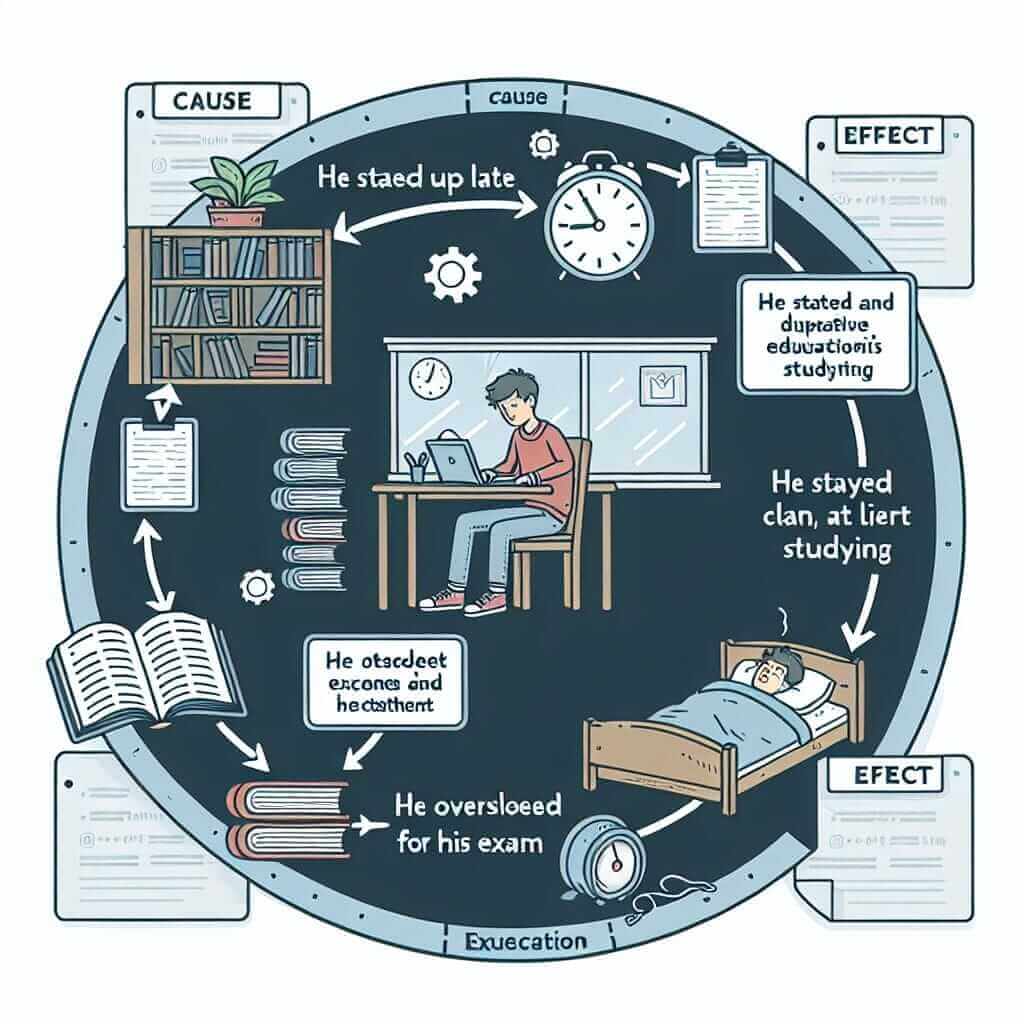“So…that” is a crucial grammatical structure for expressing cause and effect, a concept frequently tested in the IELTS. Mastering this structure can significantly enhance your writing and speaking scores, enabling you to articulate complex ideas clearly and effectively. This article delves into the intricacies of using “so…that” for result, providing you with the knowledge and tools to use it confidently in your IELTS exam.
Let’s consider these examples:
Speaking: “I was so engrossed in the book that I completely lost track of time.”
Writing Task 1: “Pollution has become so severe in some cities that residents are forced to wear masks outdoors.”
Writing Task 2: “Many argue that globalization has created a world so interconnected that events in one country can have ripple effects across the globe.”
In each of these examples, “so…that” illustrates a cause-and-effect relationship:
- Cause: The intensity or degree of something (“so engrossed,” “so severe,” “so interconnected”)
- Effect: The result of that intensity (“lost track of time,” “forced to wear masks,” “ripple effects across the globe”)
Understanding “So…That”
“So…that” is used to show that something happens or is true as a result of something else. It highlights the intensity of the cause and emphasizes the significance of the effect. Understanding this underlying meaning is key to using the structure effectively and naturally in your IELTS responses.
The Grammar and Usage of “So…That”
The structure follows this basic formula:
[Adjective/Adverb + “so” + adjective/adverb] + “that” + [Result Clause]
Let’s break it down:
- Adjective/Adverb: This describes the intensity of the cause (e.g., “hot,” “quickly,” “beautifully”).
- “So”: This word links the intensity to the effect.
- “That”: This conjunction introduces the result clause.
- Result Clause: This part of the sentence explains the consequence or outcome (e.g., “I had to take off my jacket,” “We missed our train,” “She received a standing ovation.”).

Examples in Different IELTS Sections:
- Speaking Part 2: “The food market was so vibrant and colorful that I couldn’t resist taking hundreds of photos.”
- Writing Task 1: “The graph shows a dramatic increase in smartphone usage, so much so that it now surpasses desktop computer use.”
- Writing Task 2: “Some argue that technology has become so ingrained in our lives that we are losing essential human skills.”
Mastering “So…That” for a Higher Band Score
To achieve a higher band score, consider these strategies:
- Vary Your Sentence Structure: Instead of always starting with “so…that,” try inverting the clauses or using different grammatical structures to express cause and effect (e.g., “because,” “due to,” “as a result of”).
- Use a Range of Vocabulary: Don’t just rely on common adjectives and adverbs. Expand your vocabulary to include more descriptive and impactful words to convey intensity (e.g., “excruciatingly,” “overwhelmingly,” “profoundly”).
- Ensure Logical Connection: Make sure the relationship between the cause and effect is clear and logical. Avoid forcing the structure where it doesn’t fit naturally.
Common Errors and How to Avoid Them
Here are common mistakes students make with “so…that”:
- Incorrect Word Order: “The traffic was so that I missed my flight.” (Incorrect – should be “The traffic was so bad that I missed my flight.”)
- Missing “That”: “The music was so loud I couldn’t hear myself think.” (Incorrect – should be “The music was so loud that I couldn’t hear myself think.”)
- Overuse: Using “so…that” repeatedly in a short text can sound repetitive. Vary your language.
Conclusion
Mastering the use of “so…that” is a valuable asset for achieving a high IELTS score. By understanding its grammatical structure, employing diverse vocabulary, and avoiding common errors, you can confidently express cause and effect relationships, enriching your communication and demonstrating your language proficiency. Remember to practice this structure in various contexts and pay attention to its nuances to use it effectively in your IELTS exam.